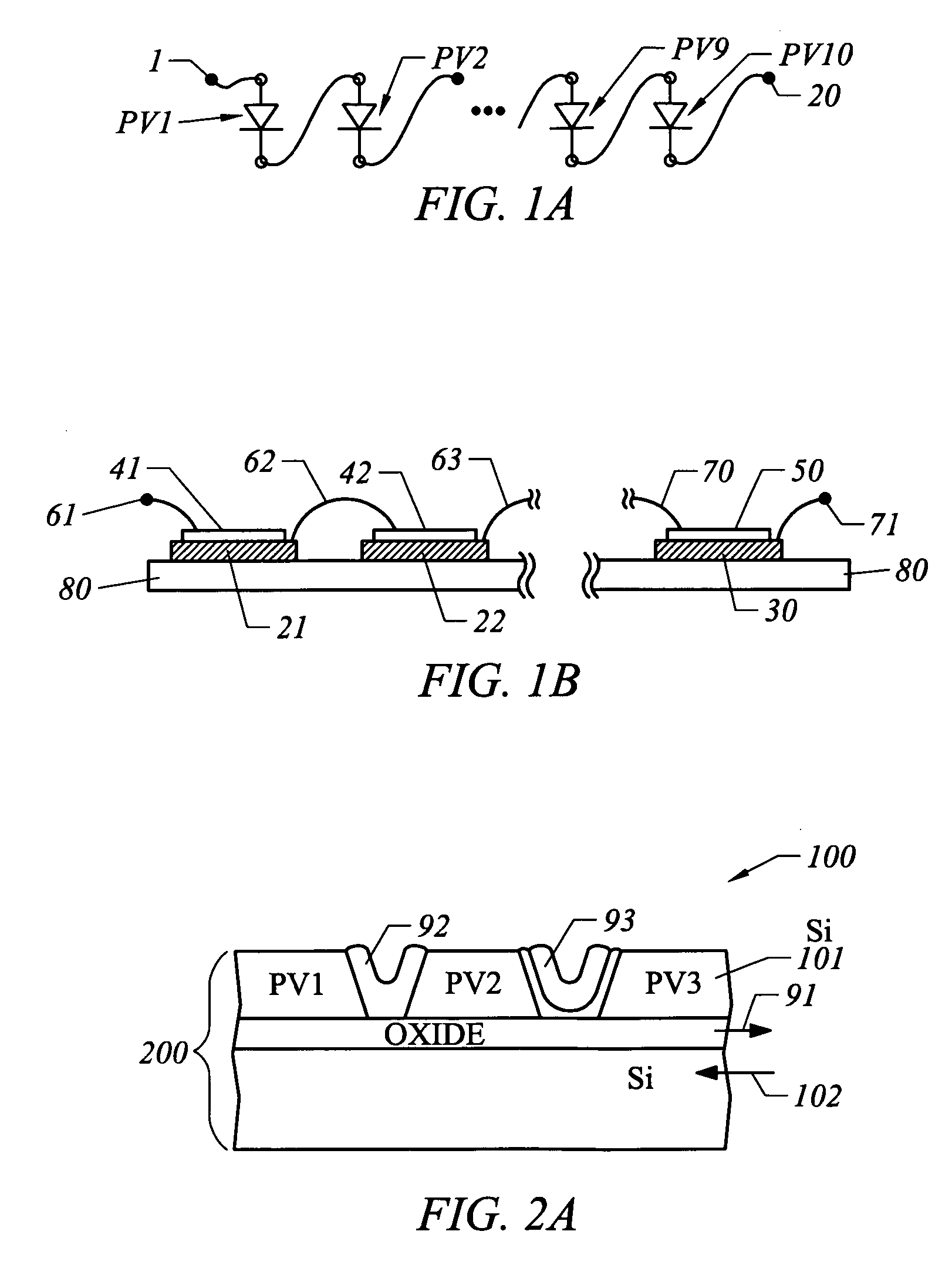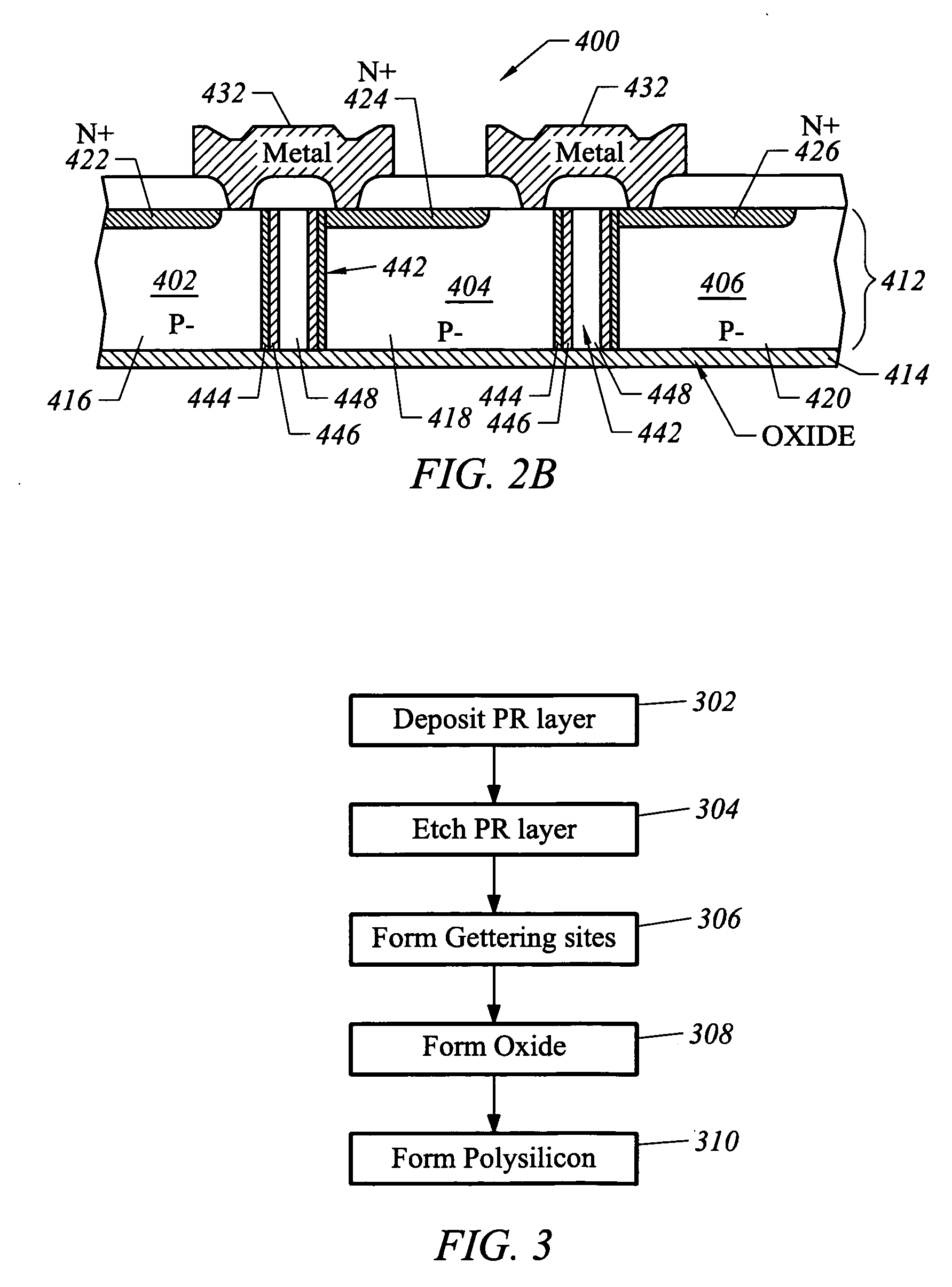Discrete and integrated photo voltaic solar cells
a solar cell and photovoltaic technology, applied in the field of solar cells, can solve the problems of high degree of defects, high material and labor costs, and high cost of di technology, and achieve the effect of high efficiency
- Summary
- Abstract
- Description
- Claims
- Application Information
AI Technical Summary
Benefits of technology
Problems solved by technology
Method used
Image
Examples
Embodiment Construction
[0031] The present invention relates to photo voltaic solar cells. For part of the reasons described above in the background, embodiments of the present invention provide a structure and a method of making a PV chip that can provide a high voltage output by integrating multiple single PV solar cell diodes in one monolithic substrate, e.g., silicon substrate or crystal.
[0032]FIG. 2A illustrates a cross-sectional view of a discrete PV device or die 100 according to one embodiment. The PV device 100 is formed using an SOI (Silicon on Insulator) technique to fabricate high efficiency PV cell arrays on a single semiconductor die. The die is packaged as a single discrete device. The PV device includes a first silicon substrate 101 and a second silicon substrate 102. At least one of the two substrates is thermally oxidized to form a silicon dioxide layer 91. The two substrates are bonded together by sandwiching the silicon dioxide layer between them. This creates a bonded structure 200. T...
PUM
 Login to View More
Login to View More Abstract
Description
Claims
Application Information
 Login to View More
Login to View More - R&D
- Intellectual Property
- Life Sciences
- Materials
- Tech Scout
- Unparalleled Data Quality
- Higher Quality Content
- 60% Fewer Hallucinations
Browse by: Latest US Patents, China's latest patents, Technical Efficacy Thesaurus, Application Domain, Technology Topic, Popular Technical Reports.
© 2025 PatSnap. All rights reserved.Legal|Privacy policy|Modern Slavery Act Transparency Statement|Sitemap|About US| Contact US: help@patsnap.com



